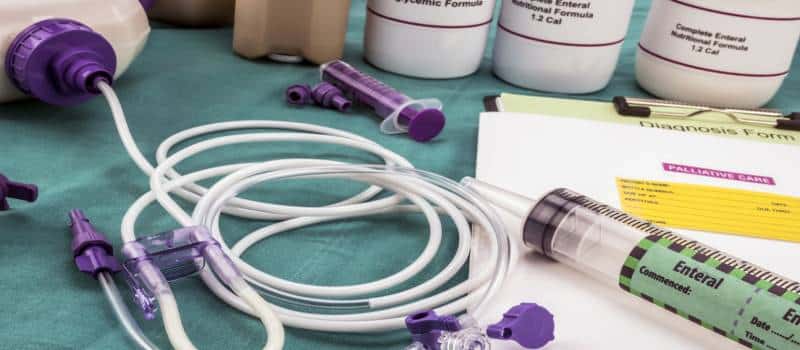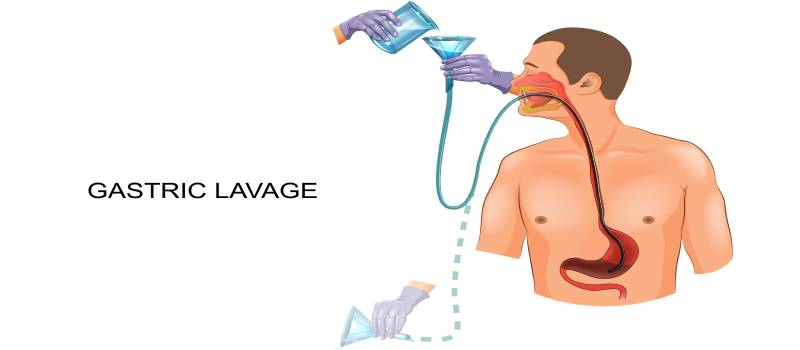Have you ever heard the terms “gavage” and “lavage?” There are medical uses for them. They sound very similar and very French. However, what do these terms mean?
“Gavage” and “lavage’ are medical terms for medical procedures. “Gavage” is feeding a patient employing a tube directed into the stomach. “Lavage” is to wash a hollow organ.
“Lavage” is commonly known as stomach pumping and gavage as force-feeding.
Force-feeding, or “gavage,” is the action of feeding another person or animal without their consent. “Gavage” refers to supplying nutritional substances via a plastic feeding tube that could go through the nose or the mouth into the stomach.
Sometimes the tube is placed through a small cut in the abdomen. The food provided to the patient consists of what that person can drink and eat or what they need for nutrition. It is also called tube feeding.
“Gavage” can also be implemented to introduce sedatives on a psychiatric patient if needed.
“Lavage” is also known as therapeutic irrigation, a medical term for cleaning or rinsing. There are different types of therapeutic irrigation, and the best known is gastric lavage. These are the other types: Antiseptic lavage, Bronchoalveolar lavage, Peritoneal lavage, Arthroscopic lavage, Ductal lavage, Nasal irrigation, Ear lavage.
“Lavage” is often confused with a medical decompression. Medical decompression consists of the removal of gastric contents. Decompression is also a surgery that refers to the removal or repositioning of any structure, thus compressing any other structure.
Decompressive craniectomy and spinal decompression are examples of this surgery. One consists of removing a part of the skull to relieve pressure from the brain. The other is used to relieve stress from nerve roots.
“Lavage” is washing out the stomach by introducing liquids and removing them.
History Of Force-feeding Or Gavage

When we say “gavage” is feeding another person without their consent, this medical practice can involve people in a coma. That person does not have a say on what to eat, but nutrition is vital for their existence.
In many countries, gavage is used in psychiatric hospitals with patients that refuse food intake due to extreme cases of anorexia. These patients are force-fed via tube and are placed under restraint.
However, the practice of gavage has a darker past and present.
In prisons, gavage was considered a standard practice when a prisoner didn’t want to eat or started a hunger strike. In 1975, the Declaration of Tokyo in the World Medical Association prohibited this practice in prisons.
At the beginning of the 20th century, women’s organizations fought for the right to equal pay and women’s right to vote. These women were known as suffragettes.
While fighting for their rights, a lot of women were imprisoned. These women then transformed their fights into hunger strikes and ended up being force-fed by the authorities.
These women were restrained by several people, tied to a chair, and fed through a tube. The authorities said they were doing it for these women’s well-being.
Many of the suffragettes described the practice of being pinned down and force-fed as being raped.
Force-feeding had become a famous torture in the United Kingdom by this time. It was so common that a flyer to vote against the prime minister illustrated a woman being force-fed by several people. The brochure read: “Electors! Put a stop to this torture by voting against the Prime Minister.”
In 2006 the United Nations War Crimes tribunal approved the force-feeding of a Serbian politician deciding that this was not torture or inhuman.
Cases of ordering force-feeding have been as recent as 2021. For example, in Greece, a prosecutor proposed the force-feeding of a member of the Revolutionary Party to stop a planned 65-day hunger strike that he started in February 2021.
Force-feeding is also used regularly in farming. Farmers will force-feed the animals to increase their growth or protect them from a health issue. The procedure is mostly practiced on ducks, geese, and cattle.
Is Gavage Still A Medical Practice?

Yes. In medical cases, doctors prefer “tube-feeding” over the phrase “force-feeding.” Via gavage, medical staff provide food for an unconscious patient, unable to swallow or too weak to feed themselves.
For the gavage, doctors order a liquid formula that contains the nutrients needed by a patient. A physician supervises this formula. The nursing department will specify when the feeding tube must be changed, when a patient is being fed for a prolonged time.
Gavage feeding on babies is also a common practice. Medics use gavage feeding on a newborn who is unable to get nutrition from breastfeeding.
According to a British publication from 1896, the first gavage was used in 1874. It was a French medical practice exclusively used on newborns and premature babies.
Nowadays, babies in intensive care are mainly being fed by gavage.
Different Lavage And Their Health Benefits
There are many different types of lavage or therapeutic irrigation. The most common is gastric lavage or stomach pumping.
Gastric lavage is famous because it is one of the most common ways to eliminate poison from your stomach. Gastric lavage is used on a person who overdoses on a drug and eats or drinks something poisonous.
Doctors might also use gastric lavage before any surgery concerning the digestive system.
The first recorded use of gastric lavage dates back to the early 19th century.
Antiseptic lavage is a practice that uses medication during the wash to reduce possible infections in organs. A dentist commonly uses this practice to treat dental conditions.
Bronchoalveolar lavage has become a famous practice nowadays due to pneumonia and covid-19. This diagnostic method of the respiratory system inserts a tube into your lungs, pumps a controlled amount of fluids, and then collects it for examination.
The peritoneal lavage helps determine if there is fluid or blood inside your abdominal cavity. This procedure is a surgical diagnosis.
Arthroscopic lavage is the washing out of the joints. This lavage is a procedure that looks to clean out blood or excess fluids on your joints. It could help reverse damage caused by arthritis.
Ductal lavage is a method used for breast cancer detection. Here, a miniature tube is inserted into the nipple to release a controlled amount of saltwater. The entire fluid is then recovered for examination.
Nasal irrigation is a personal hygiene lavage. The nasal cavity is washed to expel mucus from the nose in search of more pleasant nasal breathing.
In May of 2012, the BBC published an article that said that lung washing could help with organ transplants. According to the report, one of five donated lungs is good enough to be transplanted safely.
They noted that the British Transplantation Society said this lavage could increase the number of lungs used for transplant.
What Tools Are Used For Lavage And Gavage?

The Ewald tube is the oldest and most popular device used to pump a stomach. German gastroenterologist Carl Anton Ewald created this tool in the late 1800s.
The nasogastric tube is used for both: lavage and gavage. This is a standard tool that doctors insert through the nose and into the stomach. The nasogastric tube also works for decompression and medicine administration.
Conclusion
“Lavage” and “gavage” are medical procedures that require a tube to be inserted into your body. As such, “lavage” is a practice that looks to clean the organs, it is targeting. “Gavage,” on the other hand, is used to feed you when you are unable to.
Both practices have existed for over a century and are prevalent medical procedures nowadays.
Shawn Manaher is the founder and CEO of The Content Authority. He’s one part content manager, one part writing ninja organizer, and two parts leader of top content creators. You don’t even want to know what he calls pancakes.

